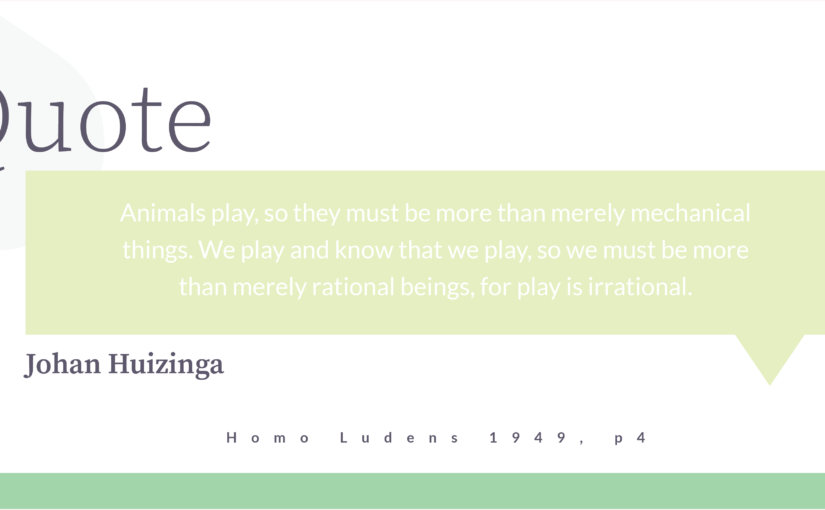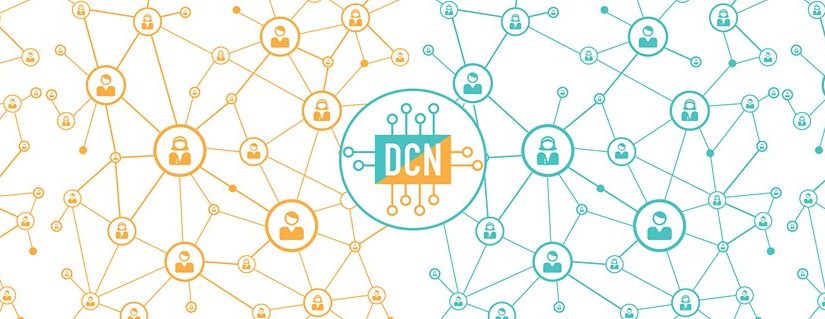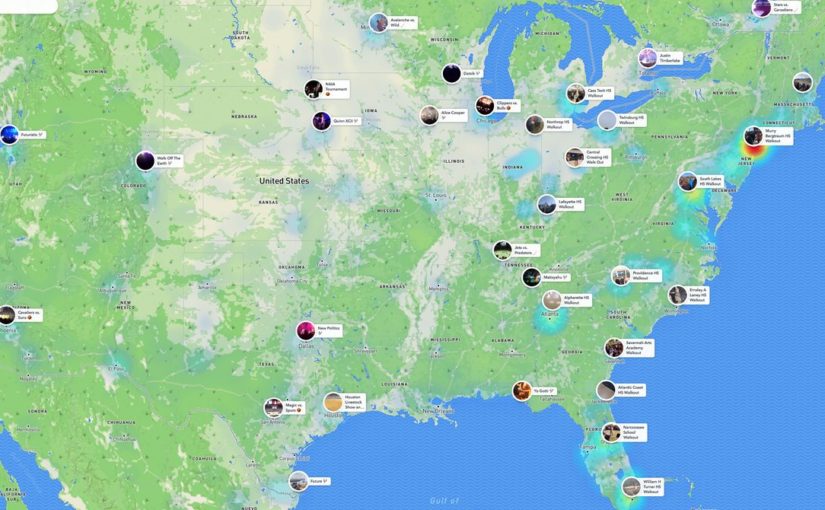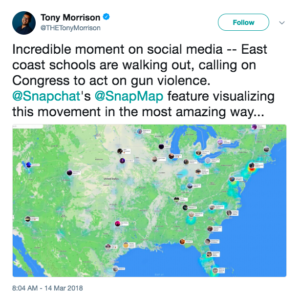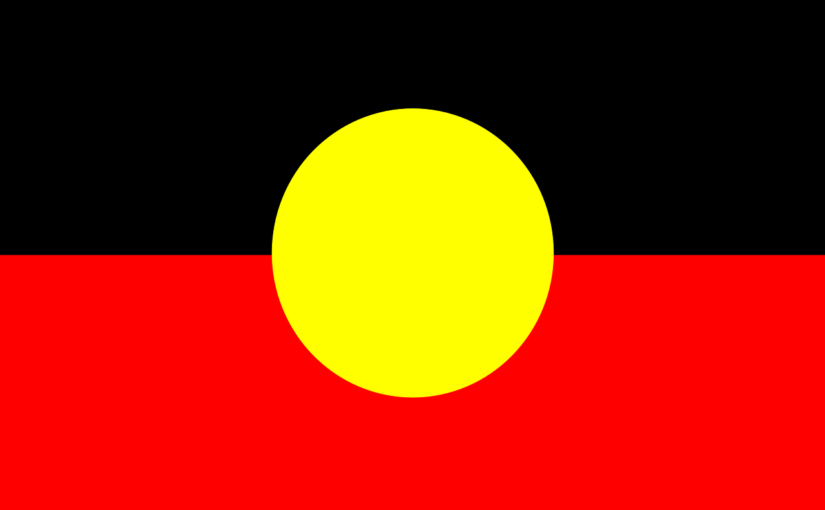LiveJournal’s use of anonymity and its place in online social networks
Rachel M.Winship
Curtin University
Abstract
This paper sheds light on blogging social network site (SNS) LiveJournal, which has been operating since 1999. It was one of the first popular mainstream blogging services which focused on replicating diary entries. While originally popularised in the United States, LiveJournal is now currently most popular throughout Russia. It does operate in other countries but for the purpose of this paper, the focus will be on Russia. The specific age group being referred to throughout this paper is youth/teens. I argue that LiveJournal’s mainstream success is due to the fact that its users have always had the option to be anonymous and operate under pseudonyms instead of real names. The absence of real names allows for online identity play through blog posts and interactions within the LiveJournal online community.
Introduction
Technology is woven tightly throughout our lives in the 21st century and has changed how we live them. As leading psychologist Sherry Turkle says “through technology, we create, navigate, and perform our emotional lives” (Turkle, 2011). “Some of the largest changes we are facing as a society are cultural, changes to our social world and the way we interact with one another” (Levitin, 2014, p.120). We now do a large percentage of interpersonal communication with people in our lives through online platforms. We create our identity now not only face to face with people but online in social networks as well. Figuring out our place of identity in these social networks allows experimentation (Pearson, 2009). Offline when creating identity you might hold back parts of yourself in case of face to face rejection. While online in social networks, you have the option in most cases of anonymity in creating a pseudonym. Social nework site platforms provide areas which are disembodied mediated and controllable, and through which alternate performances can be displayed to others (Pearson 2009). Freindster popularised the features that define social network sites – profiles, public testimoials or comments, and publicly articulated, traverable lists of friends. (boyd, 2007, p.4) On social network site (SNS) platforms the online performative space is a deliberately playful space (Pearson, 2009). “The fluidity and self-concious platforms of performance allow individuals and networks of users to play with aspects of their presentations of self, and the relationship of those online selves to others without inadvertently risking privacy” (Pearson, 2009). Communities are a social group of any size whose members reside in a specific locality, share government, and often have a common cultural and historical heritage (Dictionary.com, 2018). Online or vitual communities are a group of people who interact via internet Web sites, chat rooms, newsgroups, email, discussion boards, or forum (Dictionary.com, 2018). Online worlds provide rich grounds for experimentation with identity, and falsification is not uncommon; 25 percent of teen boys and 30 percent of teen girls say they have posted false information about themselves online, most commonly their age (Reed, 2014). LiveJournal is one social network platform that encourages anonymity in creating a pseudonyms. The SNS is an originally American and now Russian social networking service that allows users to keep a blog, journal or diary (LiveJournal, 2018). The option of anonymity on blog platform LiveJournal, can protect users security while enabling them to participate freely in the online social network (Nagel & Frith, 2015).
LiveJournal and the history of blogging
LiveJournal essentially looks and works much like other blogging sites, where the entry or posts made by the journal owner are arranged in chronological order (Raynes-Goldie, 2004). There is a link to leave and read comments for each post, where the user can read comments left (Raynes-Goldie, 2004). One of the appealing aspects which sets liveJournal apart from other blogging services is the users profile page. Every user has a journal, username and profile page (Raynes-Goldie, 2004). The profile page is where the user can input things like their interests, profile picture, contact information, etc (Raynes-Goldie, 2004). The profile picture does not have to be an exact photo of the person, which is one way they can choose anonymity. Another way they can choose to be anonymous is through their username. Unlike Facebook, whose terms and conditions require their users to use their real name, LiveJournal allows their users to choose their online identity. This is an appealing feature for people who may want more than one online identity in fear of things such as; security, judgement or scrutiny about their journal entries or interactions, from friends, family or people they know offline. By creating a profile, LiveJournal allows its users to link their blogs and identities together so that they can create and build reputations based on their journals as well as their comments and networks of friends (Raynes-Goldie, 2004). Services such as LiveJournal allow their users to specify who their “friends” are, and thus a social network is formed (MacKinnon & Warren, 2007).
LiveJournal was created in April 1999, by an American programmer named Brad Fitzpatrick. He created it as a way of keeping his friends up to date with his daily activities (LiveJournal, 2018). It reached immediate popularity and success which meant that it also became more than just one person could handle to operate (LiveJournal, 2018). There were other mainstream social networking sites around the first few years of LiveJournal’s service, like Friendster and then Myspace, but the premise of them was a little different to LiveJournal. With Friendster there was a heavier focus on meeting friends “on the premise that people were separated by six degrees” (CBS News). This was a feature that showed how you were connected to strangers and made meeting people less intimidating (CBS News). On Myspace, which is where many people from Friendster migrated to, they were known for customizable profiles, band pages and portraying who your top eight friends are. Whereas LiveJournal’s aim was and still is to blur the lines between blogging and social networking (LiveJournal, 2018). According to their own website LiveJournal is “home to a wide array of creative individuals looking to share common interests, meet new friends, and express themselves. LiveJournal encourages communal interaction and personal expression by offering a user-friendly interface and a deeply customizable journal” (LiveJournal, 2018).
Over the last two decades, the rapid adoption of social network sites had scholars begin to study their importance among teens and young adults (boyd, 2007, p.1). As boyd pointed out in an article, a large part of why many teens may use social networks is due to restrictions on access to public life that make it difficult for young people to be socialised into society at large (boyd, 2007, p.19). Restrictions on acess to public life may come from their parents or adults around them who believe that restrictions are necessary to prevent problematic behaviours (boyd, 2007, p.19). boyd argues that while social interaction can and does take place in private environments, the challenges of social interaction in public life is a part of what help youth grow (boyd, 2007, p.19). Boyd says “American society has a very peculiar relationship to teenagers – and children in general. They are simultaneously idealised and demonized; adults fear them but they also seek to protect them. On the one hand, there has been a rapid rise in curfew legislation to curb teen violence and loitering laws are used to bar teens from hanging out on street corners, parking lots, or other outdoor meeting places for fear of the trouble they might cause. On the other hand, parents are restricting their youth fom hanging out in public spaces for fear of predators, drug dealers, and gangs. Likewise, while adults spend countless hours socializing over alcohol, minors are not oonly restricted from drinking but also from socializing in many venues where alcohol is served” (boyd, 2007, p.19). With an ongoing culture of fear surrounding youth behaviour, the end result is youth having little access to public spaces (boyd, 2007, p.19). The following statement provides insight into boyd’s argument with an example from fifteen year old Traviesa; “My [guardian] is really strict so if I get to go anywhere, it’s a big miracle. So I talk to people on MySpace…I know she means well, I know she doesn’t want me to mess up. But sometimes you need to mess up to figure out that you’re doing it wrong. You need mistakes to know where you’re going. You need to figure things out for yourself” (boyd, 2007, p.19). A main motivation for users of online social networks is that it is a space which their parents or authoritative figures usually aren’t aware of. They are spaces where they can explore, socialize and express themselves exploring their identities.
Dear Diary: Community and LiveJournal
A diary is known to be a safe space for most, a place where a person can articulate their private thoughts and define their position in relation to others and the world at large (Dijck, 2004). Before people expressed their thoughts online, diary entires would probably only be read by another person if they had a close relationship. With the shift of sharing private interpersonal conversations, it is natural that a population of people online would want to share something deeper than what the testimonial and comment sections of Friendster and Myspace offered. For people who craved somewhere that they could share their thoughts, feelings, creativity and still function as their own version of a “community” (Lindemann, 2006). Although users may not use their real names and opt to use a pseudonym, the sentiments expressed through users comments on another users diary entry doesn’t make them any less valid. As Kurt Lindemann states “often, a communicatively artistic journal entry can make a reader feel personally connected to the author” (Lindemann, 2006, p.357). Before platforms like LiveJournal, communities involved in blogging were not likely to be very large or accessible to everyone because blogging required considerable technical skill and patience (Raynes-Goldie, 2004). Now with platforms like LiveJournal, blogging is easily accessible. LiveJournal is not restricted to blogging functions, but also integrates community tools in its functions, creating an online social network (Raynes-Goldie, 2004).
Identity and anonymity debate
There has been much debate between not only scholars but tech companies, who embrace what has been called the “real name” internet, versus those who embrace anonymity. Most of the debate about anonymity versus real names focuses on two related areas: trolling and safety (Van Der Nagel & Firth, 2015). Because the early internet sites relied almost solely on textual cues, there was little attempt to fix identity to one’s body (Van Der Nagel & Firth, 2015). Whereas LiveJournal exists in an internet era where many internet users are faced with the decision of how they want to portray themselves online. If they present their offline identity, including their real name and photo, they may not be able to fully express or engage with different identities for fears of “context collapse” that come with using “real names” (Van Der Nagel & Firth, 2015). Context collapse is when “social media technologies collapse multiple audiences into single contexts, making it difficult for people to use the same techniques online that they do to handle multiplicity in face-to-face conversation (Marwick & boyd, 2011). Another definition of context collapse is that broadly, it refers to how people, information, and norms from one context seep into the bounds of another (Davis & Jurgeson, 2014, p.477). Social psychologists argue that we come to know ourselves by seeing what we do and how others react to us, and that through interaction, we seek to maintain the identity meanings associated with each role (Davis & Jurgeson, 2014, p.478). Within Socia Media platforms, a persons diverse networks have the potential to converge into a single mass, requireing the user to have all of their identities engaging simultaneously with family, colleages, and drinking buddies, each of whom harbours different views of who the actor is, and different interactional and performative expectations. (Davis & Jurgeson, 2014, p. 478).
Scholars such as Bernie Hogan and danah boyd have argued that pseudonymity can protect users’ security while enabling them to participate freely online without the fears of “context collapse” which comes with using real names (Van Der Nagel & Firth, 2015). Hogan’s example explores the benefits of pseudonymity when he writes about a woman wanting to write ideologically on a blog but may not want her role as a supposedly objective Wikipedia editor to be damaged by her other, less neutral writings (Van Der Nagel & Firth, 2015). His argument is that someone can be both a liberal writer and a neutral editor who follows wikipedia’s rules; one aspect of the self is not more “authentic” than another (Van Der Nagel & Firth, 2015). Expanding on this idea, if a woman was to have dinner or go out with friends, her conversation or presentation of self might be very different to the one she portrays to her family the next day. People in day to day life present different versions of themselves which are bound to that situation or context. Perhaps the most powerful point in the decision to segment one’s online identity is that it becomes a safe and secure place to discuss complex and controversial issues (Van Der Nagel & Firth, 2015). For example Gay youths who cannot come out to their offline community may want to find people to talk to on blogging or social networking sites. Another example is teachers who may want a public-facing profile but also want privacy as they interact on other sites (Van Der Nagel & Firth, 2015). Government or other public service job employees may also want the privacy of interacting on other sites. Others may want to engage in niche communities on sites like Reddit without their Facebook friends knowing; and many people want to share political views without impacting their careers (Van Der Nagel & Firth, 2015). Danah boyd, is one of the most prominent academic critics of the argument that the “real name” internet makes online activity safer. On the contrary she believes that “real name policies aren’t empowering; they’re an authoritarian assertion of power over vulnerable people” (boyd, 2011). Boyd points out that there are many viable reasons to segment one’s identity online that have nothing to do with harassing people or acting uncivilly in the comments sections.
Trolling and doxing
Of course the flip side of all the good that comes with anonymity is the fact that there is room for trolling. Trolling is something which will not be going away anytime soon, and that has been around at least as long as people have been communicating on the internet (Van Der Nagel & Firth, 2015). Trolling is when people intentionally post content designed to incite an emotional reaction in its audience (Van Der Nagel & Firth, 2015). Trolling is generally a main point of contention for people who support the real name movement on the internet. People who support the real name movement claim that by doing so it is a proactive way to minimise trolls. However trolls still find ways to exist and be seen implying that attempting to force users to use real names still results in the unwanted trolls. Their aim is to be provocative and attempt to be shocking, agrue with users and engage in being verbally abusive. More advanced form of trolling has advanced to what is called doxing. This phenomenon involves groups of anonymous or pseudonymous users researching an individual and then publishing identifiable facts about that person. (Van Der Nagel & Firth, 2015) People claim this is for social good, exposing information about people involved in certain things someone else may not agree with. However people do this act for things that they decide is against a belief they hold.
Conclusion
As discussed in this paper, the option of anonymityon the blog platform LiveJournal, can protect users security while enabling them to participate freely in the online social network (Van Der Nagel & Frith, 2015). Although there is a current debate between the “real name” internet versus anonymity of internet users, through the use of anonymity on LiveJournal, people are able to protect their offline identities, while expressing themselves on the platform. A user is at risk for context collapse if they only use their real name when on SNS platforms. LiveJournal’s use of anonymity create’s a space where there is little risk of context collapse. Users of the LiveJournal service are able to be vulnerable and socially connected with each other while still protecting any sensitive information shared online. The users are also empowered by who they choose to share their information with, as they can make their journal entries private or share with users of their choosing.
References
Boyd, D. (2007). Why Youth (Heart) Social Network Sites: The Role of Networked Publics in Teenage Social Life. In D. Buckingham (Ed.), MacArthur Foundation Series on Digital Learning Youth, Identity, and Digital Media Volume.Cambridge, MA.: MIT Press.
Levitin J. D. (2014). The Organized mind: Thinking Straight in the Age of Information Overload. 2014
Davis, J., & Jurgenson, N. (2013). Context collapse: theorizing context collusions and collisions. Information, Communication & Society. 476-485. https://www-tandfonline-com.dbgw.lis.curtin.edu.au/doi/pdf/10.1080/1369118X.2014.888458?needAccess=true
Diaz, C., Troncoso, C., & Serjantov, A. (2008, July). On the impact of social network profiling on anonymity. In International Symposium on Privacy Enhancing Technologies Symposium44-62. Springer, Berlin, Heidelberg.
Dijck, J. V. (2004). FCJ-012 Composing the Self: Of Diaries and Lifelogs. The Fibreculturejournal. Digital Media + Networks + Transdiciplinary Critique. Issue 3. University of Amsterdam. http://three.fibreculturejournal.org/fcj-012-composing-the-self-of-diaries-and-lifelogs/
Freitas, D. The Happiness Effect: How Social Media is Driving a Generation to appear
Greenall, R. (2012). LiveJournal: Russia’s unlikely internet giant. BBC News.
Hill, K. (2011). Digital Anthropologist. https://www.forbes.com/forbes/2011/0228/focus-danah-boyd-ethnographer-facebook-digital-anthropologist.html#30b4d2d77866
Johansson, E. (2014). Blogging in Russia: The blog platform LiveJournal as a professional tool for Russian journalists. Baltic Worlds, 7(2-3), 27-36.
Koltsova, O., & Koltcov, S. (2013). Mapping the public agenda with topic modeling: The case of the Russian livejournal. Policy & Internet, 5(2), 207-227.
Lindemann, K. (2005). Live (s) online: Narrative performance, presence, and community in LiveJournal.com.Text and Performance Quarterly, 25(4), 354-372.
LiveJournal FAQ: How did LiveJournal get started? Who runs it now?. Retrieved April 2018 https://www.livejournal.com/support/faq/4.html
MacKinnon, I., & Warren, R. H. (2007). Age and geographic inferences of the LiveJournal social network. In Statistical Network Analysis: Models, Issues, and New Directions(pp. 176-178). Springer, Berlin, Heidelberg.
Marwick, A. E & boyd, d. (2011). I Tweet Honestly, I Tweet Passionately: Twitter users, context collapse, and the imagined audience. New Media Society.13. 114-133.
McLellan, K. V. (2006). “LiveJournal is a Conversation With the World”: An examination of the effects of interpersonal communication on personal blogging. Unpublished master thesis, University of Chicago.
Pearson, E. (2009). All the World Wide Web’s a stage: The performance of identity in online social networks. First Monday.14(3).http://firstmonday.org/htbin/cgiwrap/bin/ojs/index.php/fm/article/viewArticle/2162/2127
Pearson, E. (2010). Making a good (virtual) first impression: The use of visuals in online impression management and creating identity performances. In What kind of information society? Governance, virtuality, surveillance, sustainability, resilience (pp. 118-130). Springer, Berlin, Heidelberg.
Sherry, T. (2011). Alone Together: Why we expect more from technology and less from each other. http://alonetogetherbook.com
Shmatikov, V. (2011). Anonymity is not privacy: technical perspective. Communications of the ACM,54(12), 132-132.
Then and now: a history of social networking sites. Retrieved from https://www.cbsnews.com/pictures/then-and-now-a-history-of-social-networking-sites/4/

